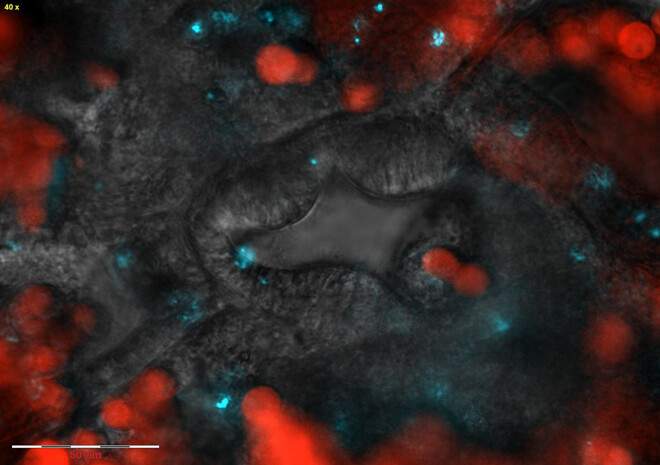Are you a journalist? Please sign up here for our press releases
Subscribe to our monthly newsletter:

We know that human-induced environmental changes are responsible for coral bleaching, disease, and infertility. Loss of the world’s stony coral reefs – up to 30% in the next 30 years, according to some estimates – will mean loss of their services, including sequestering some 70–90 million tons of carbon each year and supporting enormous marine biodiversity. Yet despite many advances, we are still far from understanding the causes and processes contributing to the corals’ demise. Weizmann Institute researchers have developed a new experimental platform for studying coral biology at microscale resolutions, which is already providing new insights into this complex problem.
The tiny – often less than a millimeter in diameter – animals that build coral reefs create a thin layer of living tissue surrounding the calcium-based skeleton. These animals live in symbiosis with single-celled, photosynthetic algae that provide nutrients and oxygen in return for carbon dioxide and shelter. “In order to understand what happens during bleaching, when this symbiosis is broken,” says Dr. Assaf Vardi, “we need to understand what happens to these organisms at the cellular and molecular levels under various conditions.”
Vardi and his team – Orr Shapiro, Esti Kramarsky-Winter and Assaf R. Gavish of the Weizmann Institute’s Plant and Environmental Sciences Department – together with Roman Stocker of MIT (currently at ETH, Switzerland), created a system they call “coral on a chip.” For the first time, the scientists were able to examine living coral polyps in the lab, under highly controlled conditions. This system is based on microfluidics technology, which had been developed to track cellular processes under life-like conditions. Taking a small piece of coral, Vardi and his team induced stressful conditions – in this case by increasing salt content – which caused the corals to release polyps, a process sometimes referred to as “polyp bail-out.” Settling the bailed-out polyps into prefabricated microfluidic wells, the scientists were able to observe, via continuous observation under a microscope, how miniature coral colonies called “micropropagates” grow and behave in different conditions.
Using their system, the team recorded, for the first time, the growth of individual aragonite crystals – the basic building blocks of the coral skeleton. The group was also able to directly visualize the initiation of coral disease, pointing to a little-known path of infection. Subjecting coral micropropagates to high light intensities, known to induce coral bleaching, enabled the team to follow the elimination of the symbiotic algae, one cell at a time.
Vardi’s lab group is already in the process of adapting the coral-on-a-chip system to track the nutrient and carbon cycles of reef-building corals, as well as delving further into disease and bleaching processes. “Many corals are running out of time; it is crucial to know how our actions are affecting their survival, and how they affect ours,” he says. “Our method can help researchers investigate everything from the coral genes that affect survival, to the strategies coral use to build reefs, to their effects on the marine carbon cycle.” Indeed, as corals represent an early stage in the evolution of multicellular organisms, Vardi envisions the coral-on-a-chip platform establishing coral micropropagates as a new model system for research.
Dr. Assaf Vardi’s research is supported by the Benoziyo Fund for the Advancement of Science; the Angel Faivovich Foundation for Ecological Research; the Rothschild Caesarea Foundation; Dana and Yossie Hollander, Israel; Roberto and Renata Ruhman, Brazil; Selmo Nissenbaum, Brazil; the Brazil-Israel Energy Fund; the Lord Sieff of Brimpton Memorial Fund; the European Research Council; the estate of Samuel and Alwyn J. Weber; the Germaine Hope Brennan Charitable Foundation, and the Human Frontier Science Program (HFSP). Dr. Vardi is the incumbent of the Edith and Nathan Goldenberg Career Development Chair.